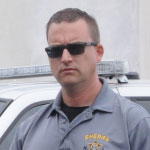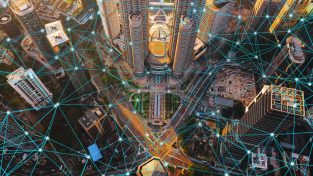About six years ago, I was lugging a bulky Leica ScanStation 2 and all its peripherals (large brick-sized batteries, laptop, power adapters and lots of cables) to a homicide scene. I spent near eight hours on the scene, setting up multiple targets, slowly taking scan after scan to only have to painstakingly stitch them together later to get a complete point cloud.
Fast forward to today, and I carry my Leica ScanStation P40, and only my P40, to a scene. Scanning the entire scene is easier without the need to setup much more equipment, which also means much less opportunity to accidentally contaminate the scene. And with the P40’s speed, I get a complete point cloud within one and a half hours of being on scene.
Laser scanning technology is ever evolving, and this is no more evident than in the public safety sector. In my nine years of working with the Ocean County (New Jersey) Sheriff’s Office within the crime scene investigation unit I’ve experienced first-hand how this technology is continually advancing.
What’s to come? Here are my top three observations of the latest trends in laser scanning for public safety.
Lighter, smaller, faster
Laser scanners are continually decreasing in size while increasing in speed. From my beginnings of working with the ScanStation 2 to now working with the P-series, my team and I have decreased our time on site by 80 per cent.
I only see this trend continuing as Leica Geosystems introduces minitaurised laser scanners, such as the Leica BLK360. Weighing in at only 2 pounds, this imaging laser scanner could certainly make scene captures even quicker and easier. As this is the first generation of such a technology, we are continuing to evaluate its capabilities in the Public Safety sector. It’s not designed for the accuracy of the P-Series, which is our go-to, but there is definitely potential.
Harmonised Experience
When I was capturing and processing data six years ago, after completing the registration with Cyclone REGISTER in the office, I would prepare rudimentary exhibits and publish a TruView for immediate review by others for markup and edits.
Today, public safety suites like the Leica Incident Mapping Suite, can read the point clouds directly, meaning no more time exporting and importing large files. And I can publish from Cyclone and Cyclone Register360 straight to TruView Cloud. TruView Cloud provides security with users that can be assigned different levels of permissions and data set access restrictions, while always automatically syncing all user’s edits and markups, meaning no more back-and-forth emails or shipping CDs of data.
Safety from the sky
Last but not least, the progressive nature of the use of Unmanned Aerial Vehicles (UAVs) in public safety is especially interesting. While not necessarily a laser scanning application (today anyway), this trend is too important not to include.
This real-time solution can bring unmined abilities to the sector, increasing safety and better protecting communities worldwide. There are several applications where UAVs can be deployed:
- Search and rescue
- Critical infrastructure inspections
- Reconnaissance missions
- Before-and-after scenarios, such as natural disaster zones
Technology is always advancing, improving and changing. With laser scanning in public safety, the possibilities are limitless. I encourage my colleagues to embrace the discovery of what is possible with the latest developments and newest capabilities. Happy scanning.
 Sergeant David J. DeLeeuw is a nine-year veteran of the Ocean County Sheriff’s Office. In January 2012, David was re-assigned to the Crime Scene Investigation Unit to assist in the advancement of the department’s 3D laser-scanning program and forensic video analysis unit. David worked in the Civil Engineering and Land Surveying industry for more than 10 years prior to joining the Sheriff’s Office in 2008. David has assisted other agencies nationwide with their 3D laser-scanning program and is considered a knowledgeable and proficient user of the technology amongst his peers. David has been a guest speaker at multiple seminars throughout the country and has been featured in various online blogs and magazine articles.
Sergeant David J. DeLeeuw is a nine-year veteran of the Ocean County Sheriff’s Office. In January 2012, David was re-assigned to the Crime Scene Investigation Unit to assist in the advancement of the department’s 3D laser-scanning program and forensic video analysis unit. David worked in the Civil Engineering and Land Surveying industry for more than 10 years prior to joining the Sheriff’s Office in 2008. David has assisted other agencies nationwide with their 3D laser-scanning program and is considered a knowledgeable and proficient user of the technology amongst his peers. David has been a guest speaker at multiple seminars throughout the country and has been featured in various online blogs and magazine articles.

















